While the first pistol we looked at was an early example intended for European markets, this next one is a later example packaged and marked expressly for the US market. For the most part, the pistol is identical except for the markings. The packaging is different for the US market too. Mechanically, it is slightly different but that has more to do with an evolution of the design than a change for American shores. When looking at the following pictures, I recommend that you compare and contrast them with the example posted earlier. We'll start with the box:
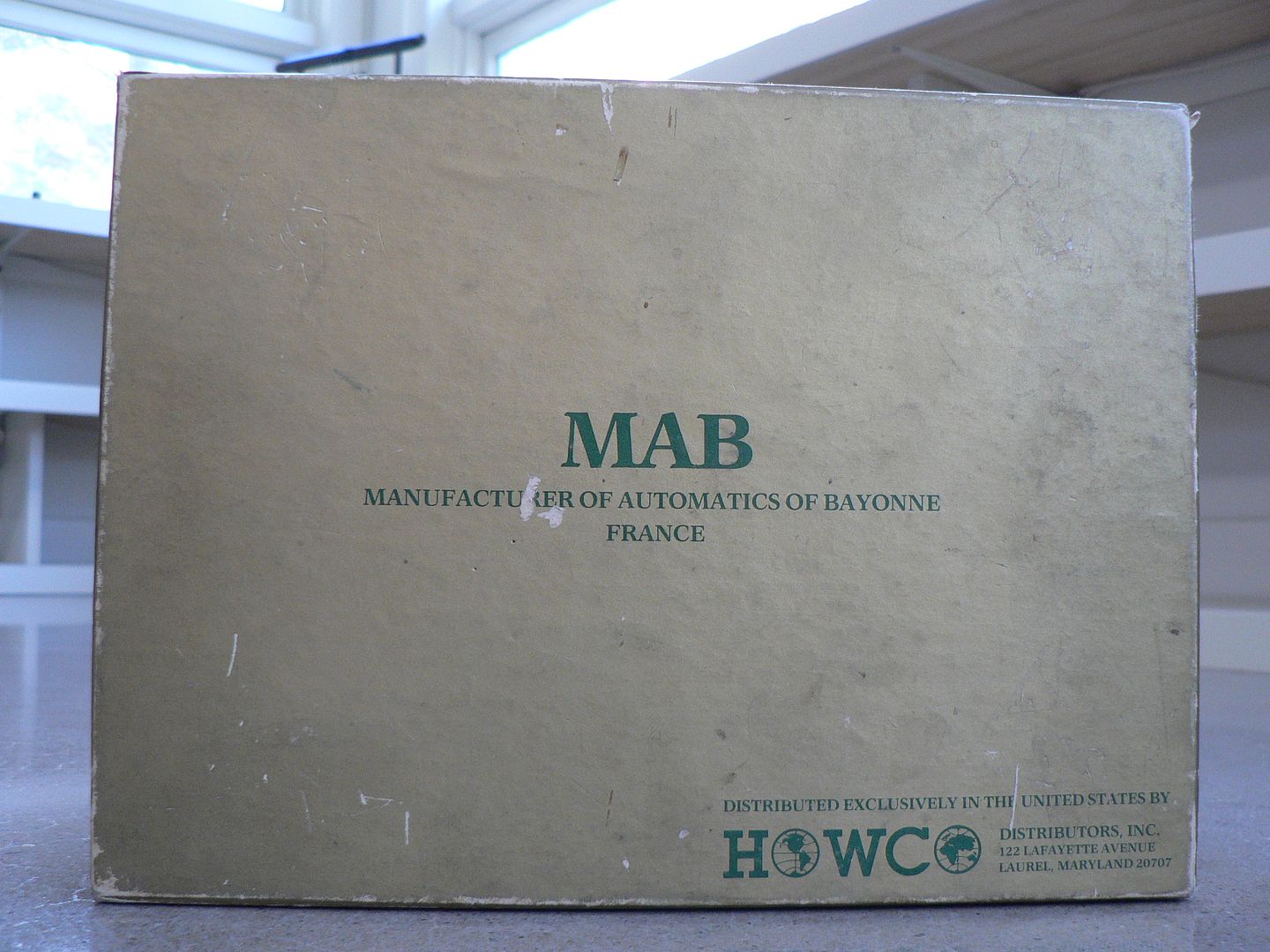
It's a gaudy 1970's gold color with green lettering. Surprisingly, the dimensions differ slightly from the European box. Clearly it's intended for the US market and, while the grammar is a bit awkward, it does the job. But considering its construction details, I believe it to be made in France. I'll post a comparison of the two at the end of this article.
Other than the top, the only other markings are on the right edge:
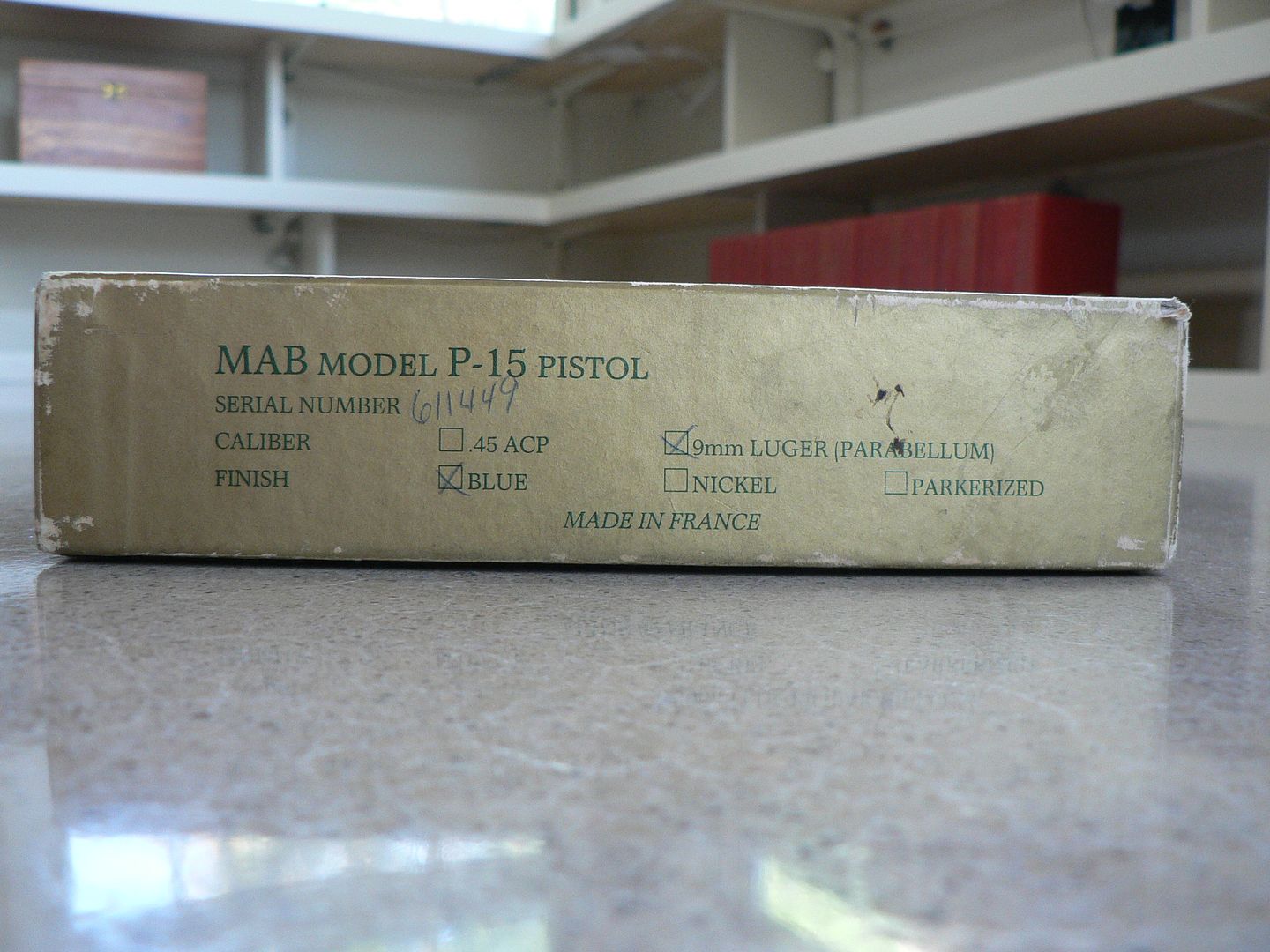
Clearly, the PA-15 was offered in three finishes and two calibers at the time this one was made. I've never seen a nickel one but they were obviously made.
Box top removed:

Notice that only one magazine was included with this one. The bag it was wrapped in is shown folded up and laying in the box top. it's the same as the bag we saw earlier. Originally, this most likely came with a United States specific manual in boring black and white (which may in fact have been printed in this country) but that has been lost to time. It may have also been imported with the certificate shown previously and a cleaning brush but that is speculation.
Here, we see the pistol removed showing the shaped insert which is glued in place:

Right side profile:
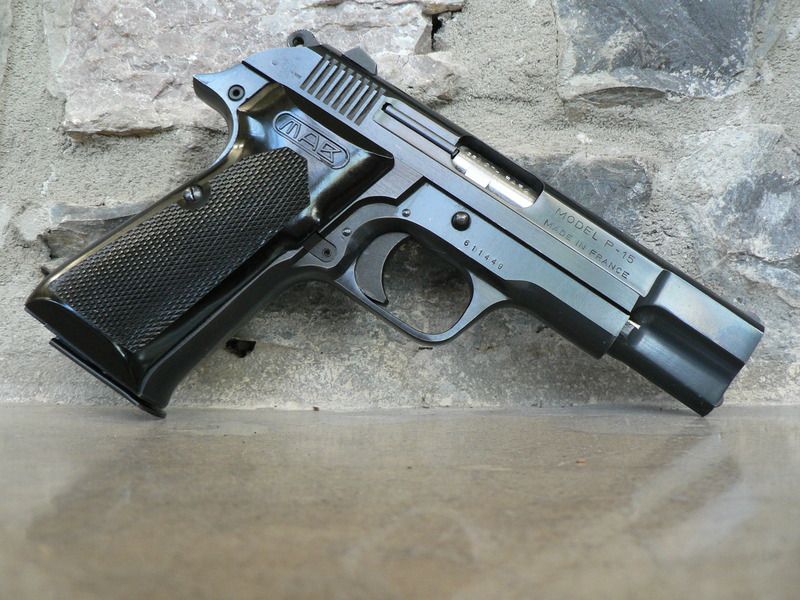
Again, compare and contrast this and the following photographs with the earlier European market example shown previously and you'll see quite a difference in the markings.
Left side:
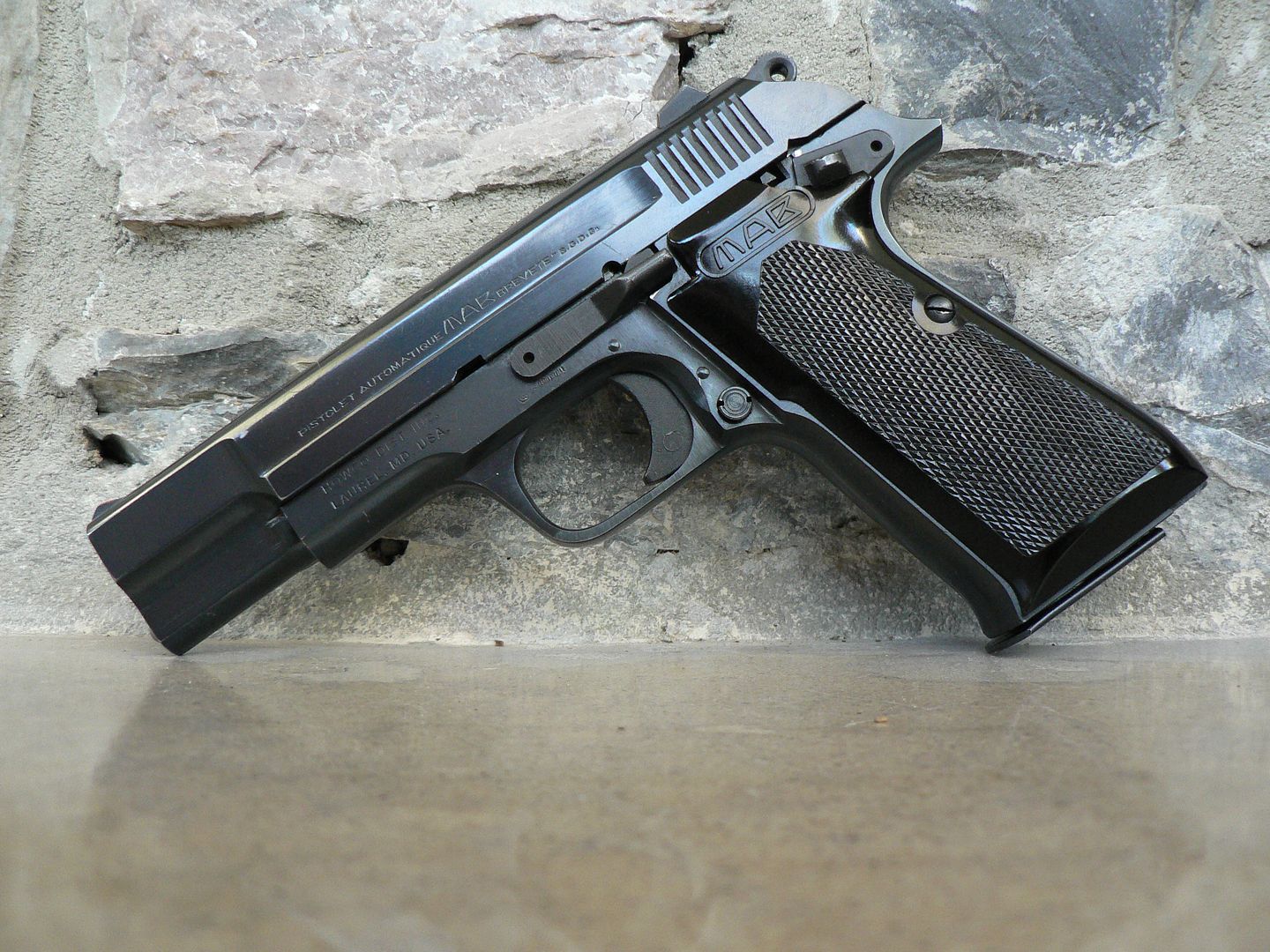
Import marking:
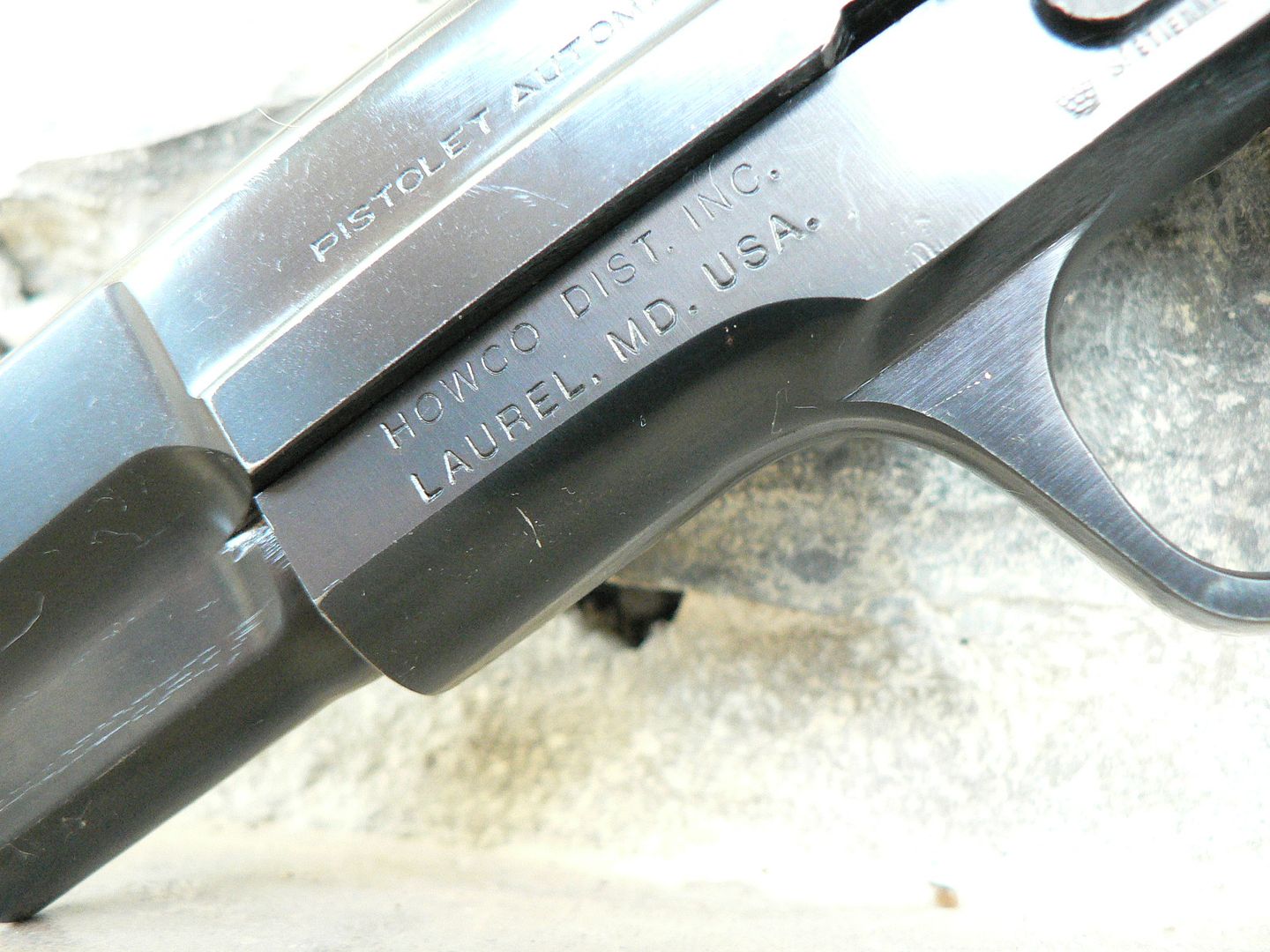
As it doesn't appear to cut through the bluing, I can only surmise that this may have been applied in France during manufacture.
Frame inspection proof:
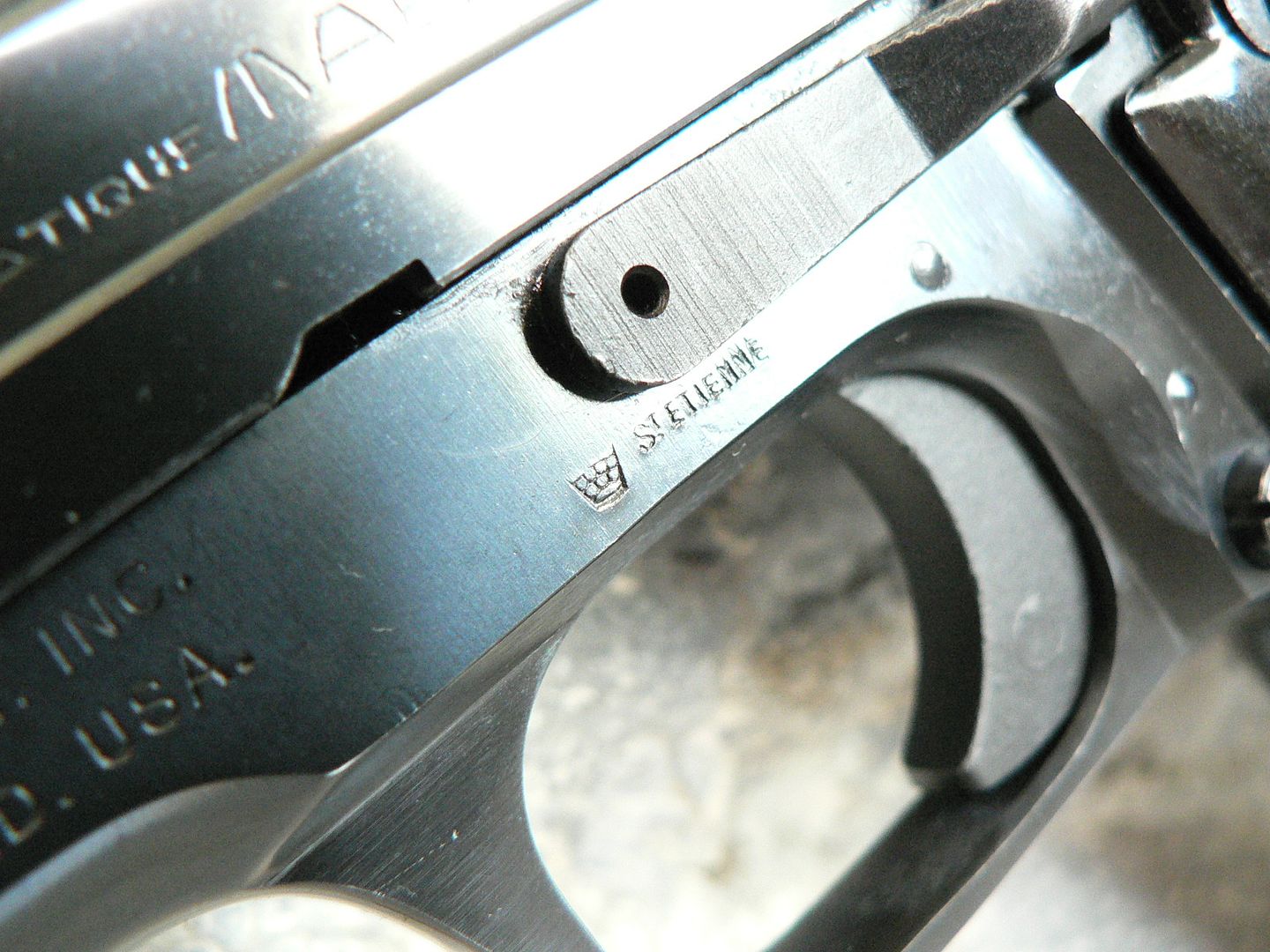
The magazine release on these later examples exhibits concentric circles:
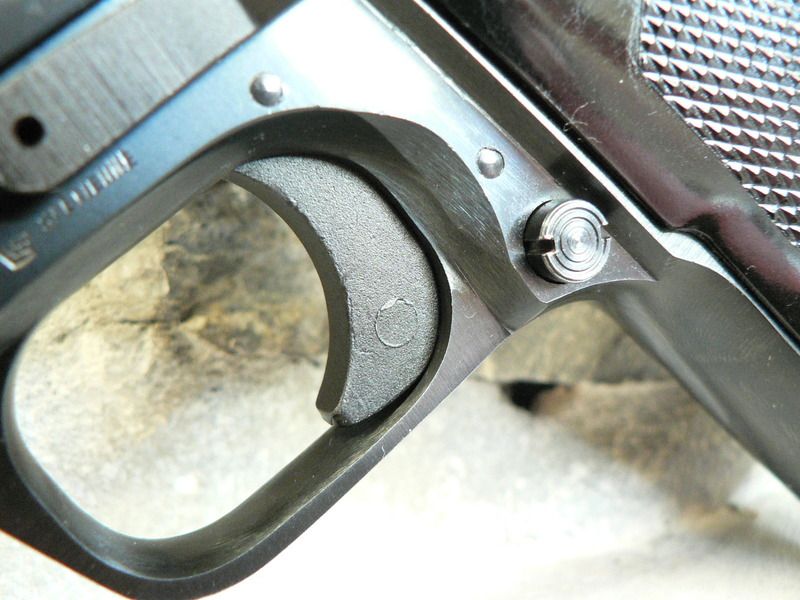
Also notice the ejection pin mark on the trigger. This is a dead giveaway that the trigger was cast.
Moving over to the right side, we see the model designation and country of origin:
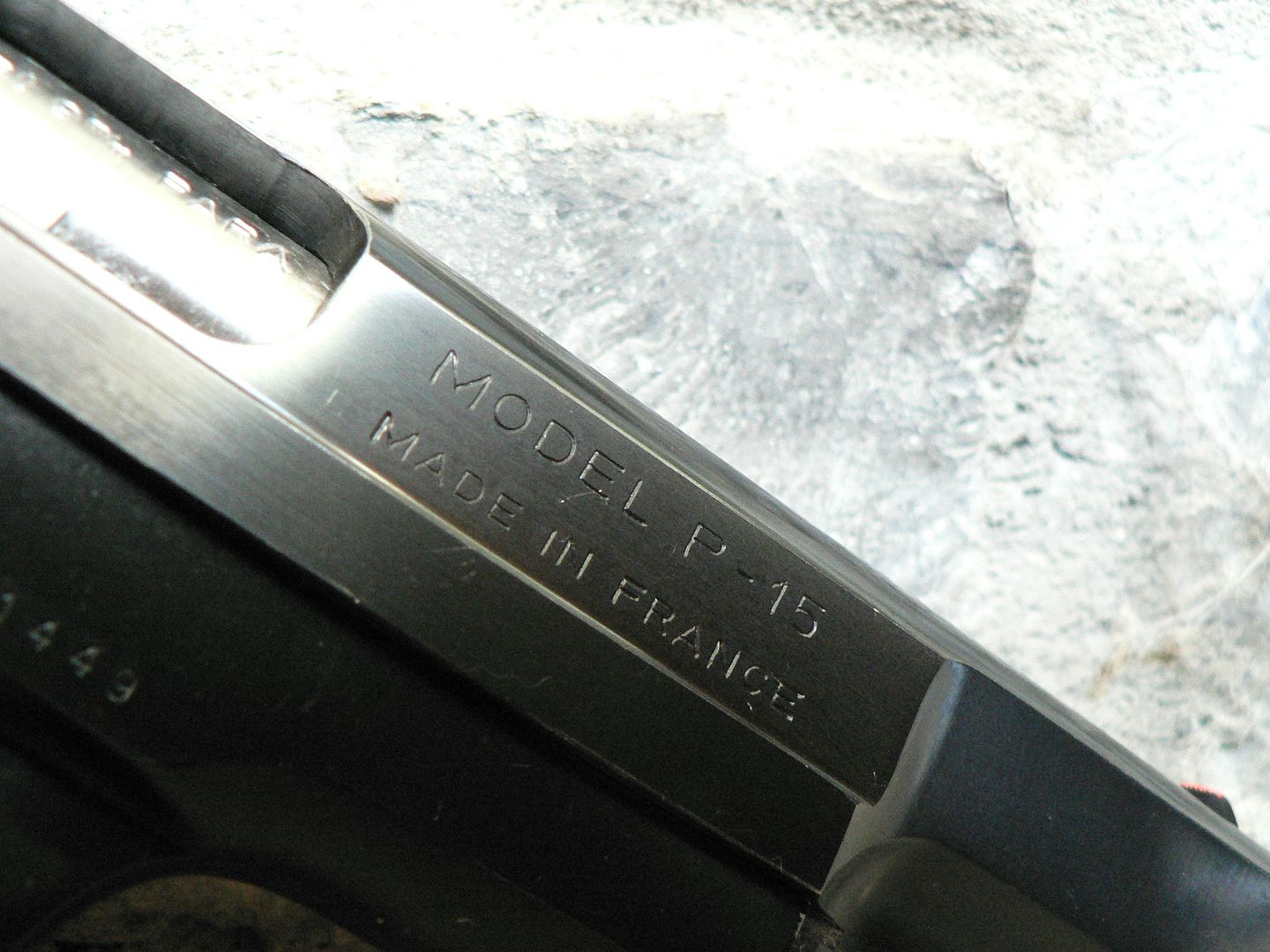
The slide proof mark:
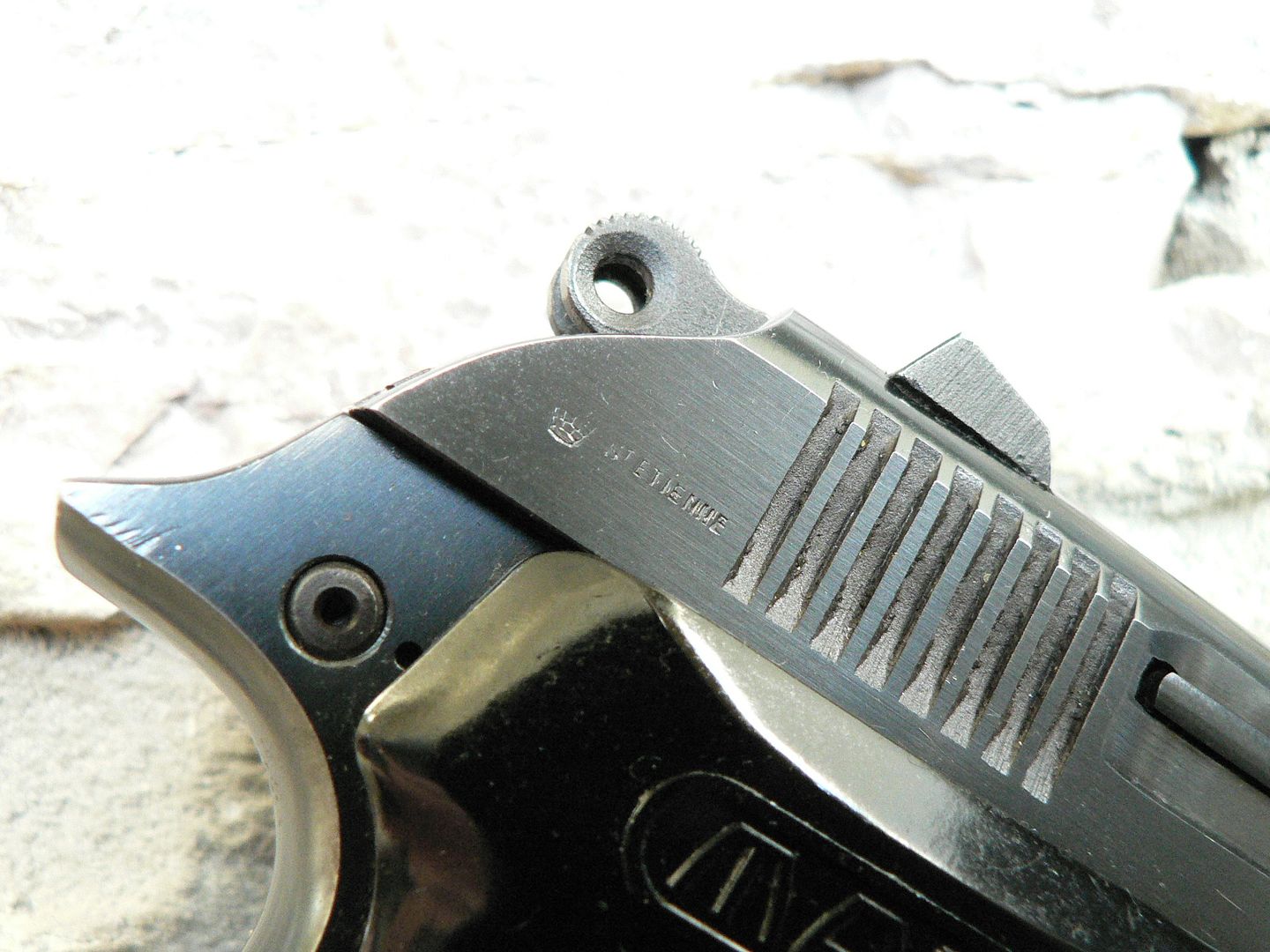
Serial number:
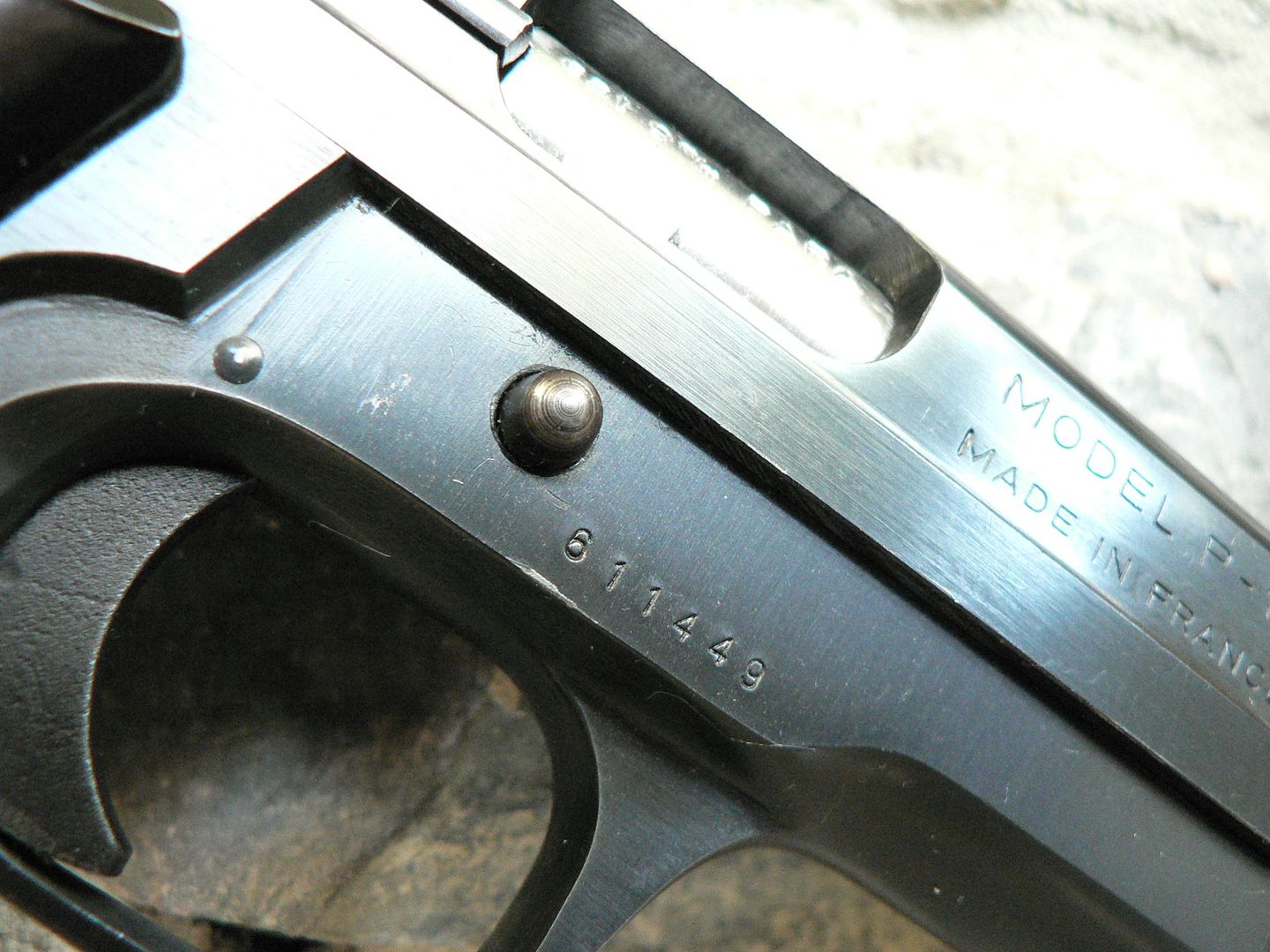
Where the magazine catch was fire blued on the earlier one, the bluing on this example matches the frame:

At the front of the slide, we can clearly see the barrel bushing:
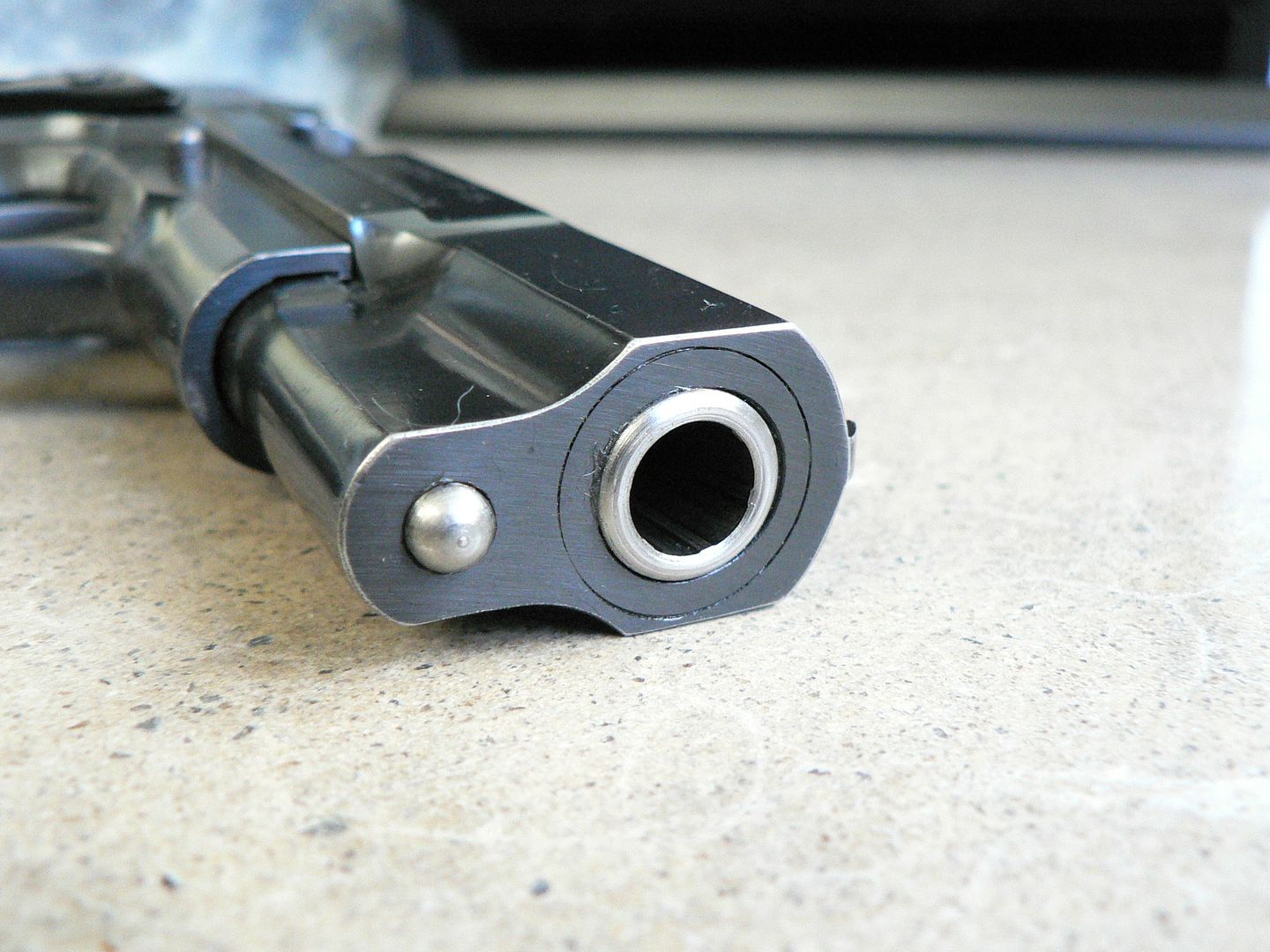
On the earlier example, the bushing was much less visible but the grinding marks were plainly seen. As we'll see later, this particular pistol shows an overall more polished appearance than the previously illustrated one.
Apparently, the grips on these are brittle. Judging by the slightly bunged up grip screws, this one has them removed in the past. The right grip shows cracking around the screw, indicating that it was overtightened at some point:
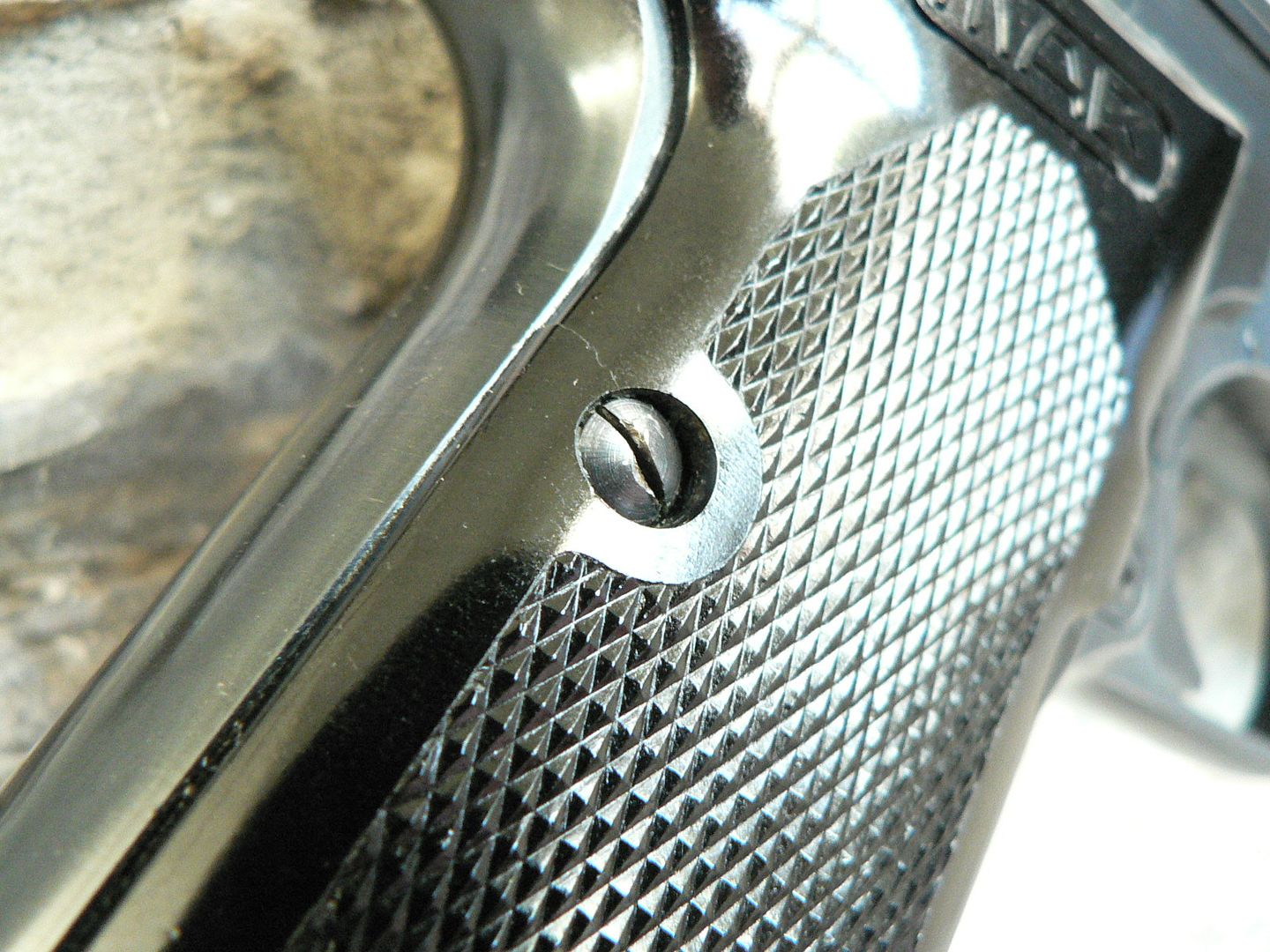
The left one is also chipped at the upper rear:

For comparison purposes, here is the same area on the previously illustrated pistol:
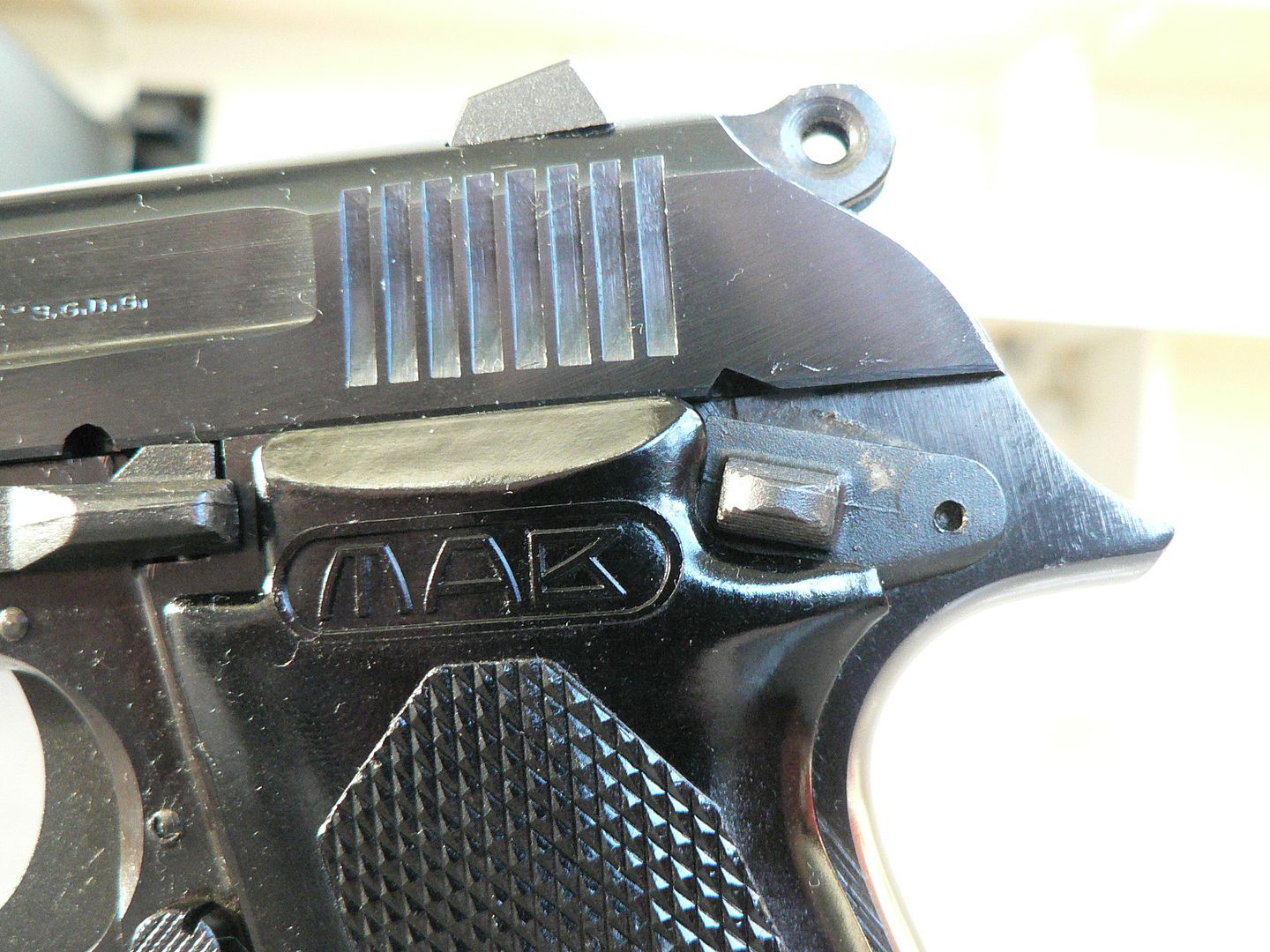
In the next post, we'll disassemble this one and gawk at the innards. Check back in a bit for that and until then, enjoy life and spend a day at the range. Its good fun and a great stress reliever. Bye for now!